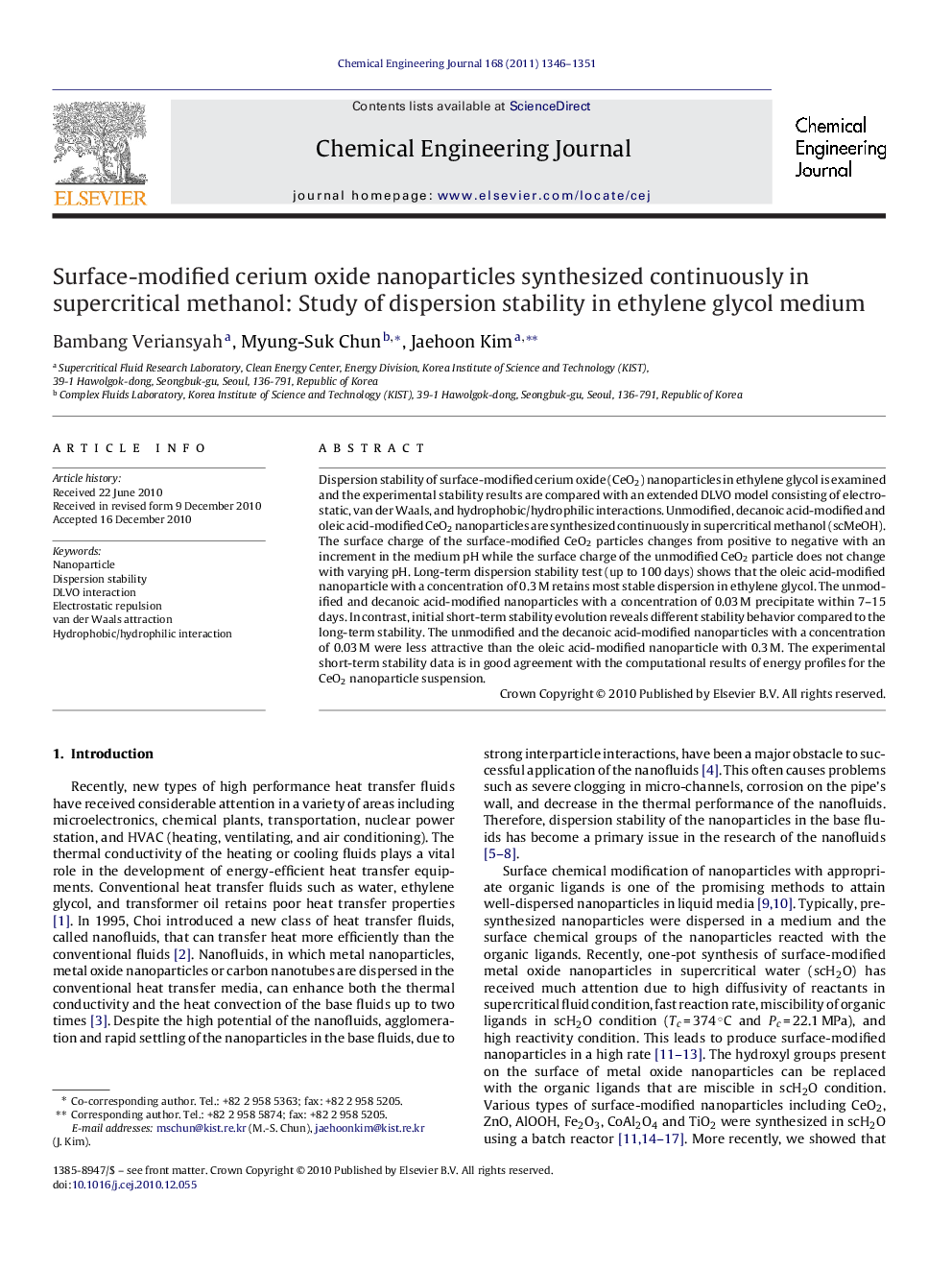| Article ID | Journal | Published Year | Pages | File Type |
|---|---|---|---|---|
| 151191 | Chemical Engineering Journal | 2011 | 6 Pages |
Dispersion stability of surface-modified cerium oxide (CeO2) nanoparticles in ethylene glycol is examined and the experimental stability results are compared with an extended DLVO model consisting of electrostatic, van der Waals, and hydrophobic/hydrophilic interactions. Unmodified, decanoic acid-modified and oleic acid-modified CeO2 nanoparticles are synthesized continuously in supercritical methanol (scMeOH). The surface charge of the surface-modified CeO2 particles changes from positive to negative with an increment in the medium pH while the surface charge of the unmodified CeO2 particle does not change with varying pH. Long-term dispersion stability test (up to 100 days) shows that the oleic acid-modified nanoparticle with a concentration of 0.3 M retains most stable dispersion in ethylene glycol. The unmodified and decanoic acid-modified nanoparticles with a concentration of 0.03 M precipitate within 7–15 days. In contrast, initial short-term stability evolution reveals different stability behavior compared to the long-term stability. The unmodified and the decanoic acid-modified nanoparticles with a concentration of 0.03 M were less attractive than the oleic acid-modified nanoparticle with 0.3 M. The experimental short-term stability data is in good agreement with the computational results of energy profiles for the CeO2 nanoparticle suspension.
